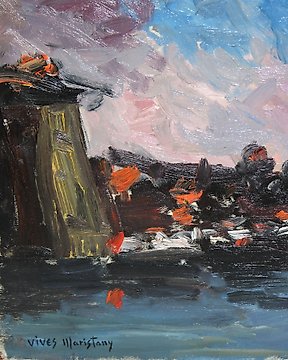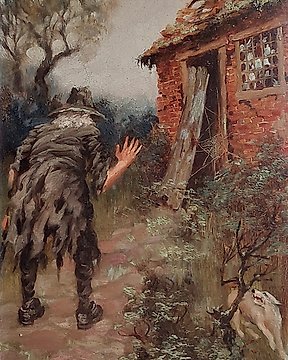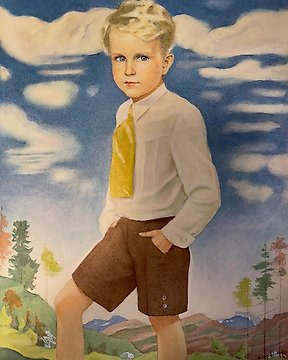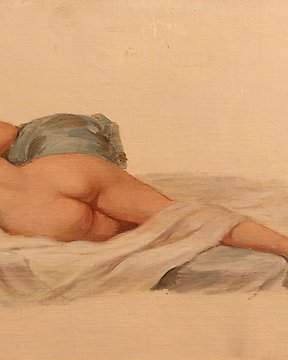Austrian school (XX) 1920 Signed ‘FK’. - Female nude
No. 82299275
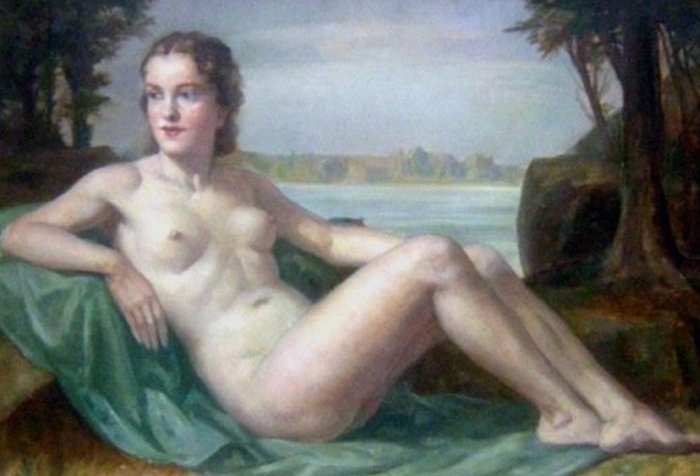
Ivo Saliger (1894-1987) - Nude on the beach
No. 82299275

Ivo Saliger (1894-1987) - Nude on the beach
This large nude painting ( probably, artists wife as the model) was executed ca. in 1930s by renown Austrian painter Ivo Saliger (1894 - 1987). A twentieth century Austrian artist, Ivo Saliger was known both for his original paintings (nudes, madonnas, landscapes) and etchings . He moved to Vienna in 1908 and studied painting and etching techniques at the Academy of Vienna, under some of Austria’s finest artists such as Rudolf Jettmar, Ludwig Michalek and Ferdinand Schmutzer. Saliger completed his studies at the Academie Moderne, in Paris. He returned to Vienna in 1920 to assume the post of professor of art at the Academy. During the 1920’s and 1930’s, Ivo Saliger developed strong Art Deco elements within his art. These elements are clearly seen in Justice where a lawyer steadfastly defends his client who is threatened by the mob before them. This is brilliantly portrayed by the clenched hands and pointing fingers in the foreground. Behind them looms the giant figure of justice with her familiar symbols of the scales, the sword and the blindfold.When German soldiers marched into Austria, Saliger, like so many other artists, was forced to paint images in support of the Third Reich. His paintings were frequently exhibited at the ‘Great German Art Exhibition’ held annually in Munich between 1937 and 1944.After the end of the Second World War in 1945, Saliger was again free to create his own art. My feeling is that this large etching was created by the artist at this time. It would seem he made Justice with the thought of the great many Americans stationed in Germany and Austria at this time. Note, for example, that he has written, “orig(inal)” etching along the lower plate-mark, instead of the German, ‘radierung’. Also he has included the characteristic American copyright ‘c’ within the etching to the lower right. Justice was clearly a primary issue of the day, particularly within the post war trials at Nuremberg.Whatever Ivo Saliger’s reasons were for creating Justice, the strength and power of this etching cannot be overlooked. It is a truly monumental work of Art Deco imagery.
Literature: Prof.H.Fuchs, Lexicon of Austrian artists, Vienna, 1975; Thieme/Becker "Lexicon of artists from antique to contemporary" (in German), Leipzig, 1999; in on-line: http://cartage.org.lb/en/themes/Biographies/MainBiographies/S/Saliger/Saliger.htm
Inscription: signed lower left.
Technique: oil on cardboard . Original period frame.
Measurements: unframed w 39 1/3" x h 27 1/2 " (100 x 70 cm ), framed 44 1/8 " x 32 1/4 " ( 112 x 82 cm ).
Condition: in very good condition
You might also like
- 16+
This object was featured in
How to buy on Catawiki
1. Discover something special
2. Place the top bid
3. Make a secure payment

